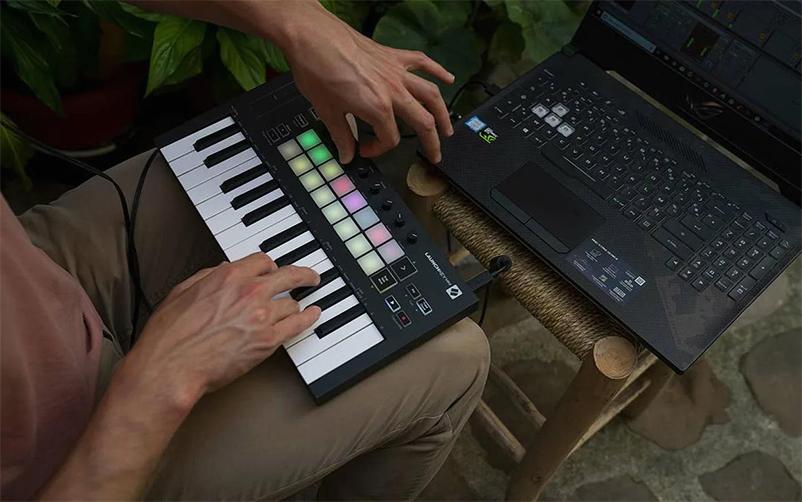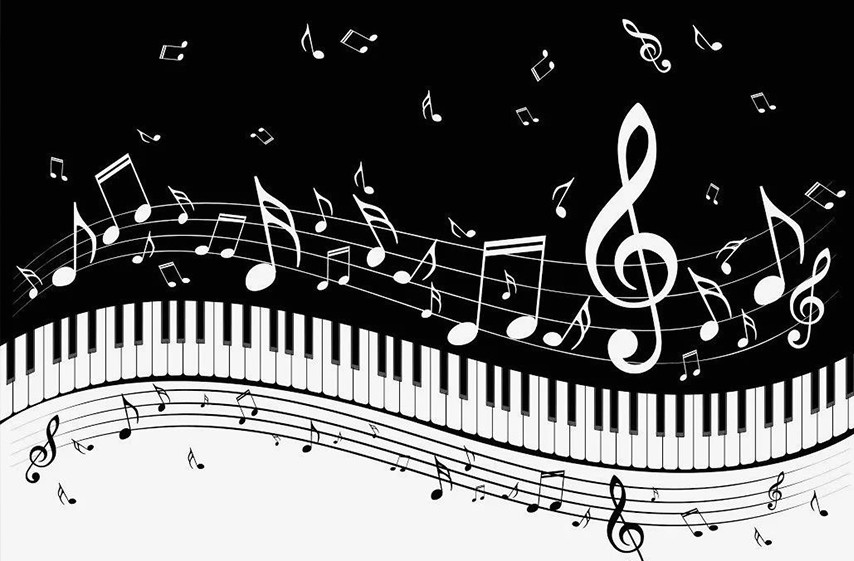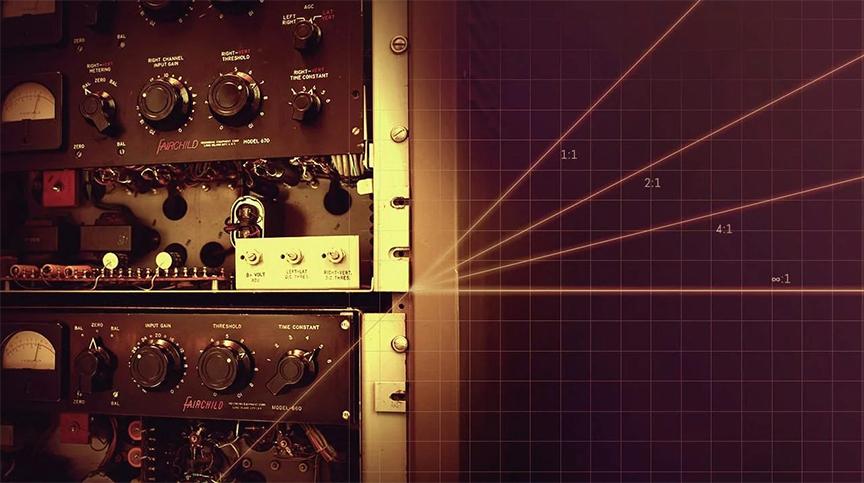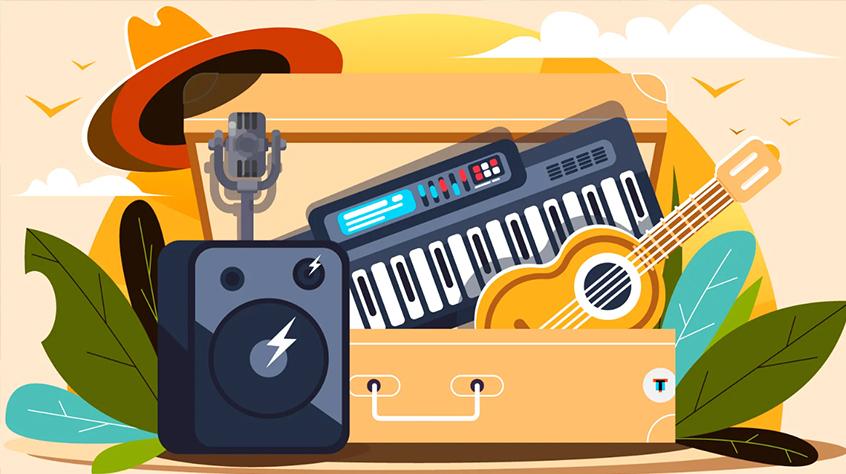Hip-hop drum patterns
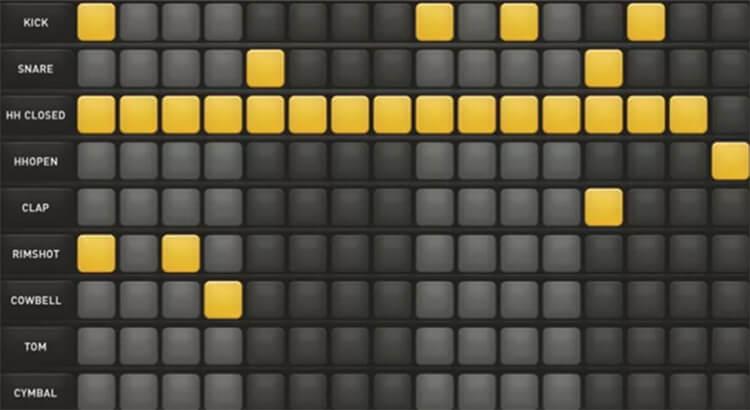
Rap music has gained immense popularity around the world and has influenced many other genres. It is based on hip-hop drum patterns, which any producer who wants to work in this musical direction should know.
We will talk about the most popular rap drum patterns in this article that can be made using the online DAW Amped Studio. But first, let’s talk about the history of hip hop and how it has influenced drummers around the world.
Hip hop music, also known as rap, is part of a cultural movement that originated in the Bronx, New York in the 70s. This movement included works like rap, DJing, break dancing and street art. However, for drummers, the beat is the most important part.
Usually hip-hop drum patterns are made from electronic instruments or old samplers played by DJs instead of real musical instruments during live performances, which was then a common practice.
Nowadays, most rappers have live music, and the beats are pretty simple, so they don’t distract the listener from the main part – the rapper. These are mostly rock beats, in the sense that the kick drum emphasizes weak and sometimes non-standard beats.
Nowadays, most rappers have live music, and the beats are pretty simple, so they don’t distract the listener from the main part – the rapper. These are mostly rock beats, in the sense that the kick drum emphasizes weak and sometimes non-standard beats.
On the other hand, the snare drum is usually located on beats 2 and 4 in 4/4 time and acts as a background part. Ghost notes are also common in rap to add sensation and captivate to the music.
Finally, the hi-hat or similar high frequency percussion is where things get interesting. It usually includes many different elements that embellish the sound, such as open hi-hats to accent certain beats, hi-hat rolls, and more.
On the other hand, the snare drum is usually located on beats 2 and 4 in 4/4 time and acts as a background part. Ghost notes are also common in rap to add sensation and captivate to the music.
You can also learn more about the Amped Studio online drum machine and try creating your own hip-hop beat.
Hip-hop drum pattern №1
The first example is what everyone learns in one of the first drum lessons. It is based on a basic rhythm and can often be heard on playlists of various genres.
Assuming 4/4 size, a backbeat groove usually means the snare lands on beats 2 and 4 of each bar.
On the other hand, you’re playing the bass drum in beats 1 and 3. If you’re not familiar with how an 8th note beat works, you can count the bar like this: “1, and, 2, and, 3, and , 4 , and”.
Also, to add flavor to the basic hip-hop drum pattern, include another kick on the “and” after the “1” and after the “3”.
To end the rhythm, add the hi-hat to the end, eight times per bar, and you have a basic hip-hop drum pattern.

Hip-hop drum pattern №2
The next hip-hop drum pattern is not as easy as the first one, but not the most difficult either. It is used in many popular compositions of the genre. Let’s start with the simplest – hi-hat.
In this example, the hi-hat should be added as straight eighth notes. In other words, for every beat and every “and” eight times per bar. On top of that, drum pattern of the bass drum is also pretty simple, but this time it’s two bars long.
The bass is placed on the first beat and “and” on the third of each bar. In the second bar, you include an additional note of the kick drum in the “and” beats of 1.
Snare is the hardest part. Two of the three notes of the snare, as usual, correspond to beats 2 and 4.
If you play this hip hop drum pattern as a 16th note groove, you should count it as “1 e and ah, 2 e and ah, 3 e and ah, 4 e and ah.” In this case, the third snare falls on the e of the third beat. Here’s what the notation looks like:

Hip-hop drum pattern №3
This hip hop drum pattern is another classic and one of the funniest rap drum patterns of all time.
We’ll look at it as a 32nd note groove. If you can’t count the 32nd note, it’s like counting the 16th, but instead of counting every sound, you count every second sound.
The hi-hat is the easiest part of the groove, because you play it just like any 8-note groove – eight times per bar, per beat and per beat interval.
The snare drum pattern is just as simple. Play the “and” of each bar and you’re done.
The kick drum is the hardest part of this hip hop drum pattern, so let’s go step by step. First, you play the bass drum on every beat. In the first eight 32-notes, you also play it between 1 and “e”, and also on “ah”. You add another note between the “ah” of the third and fourth beats, and that’s it.
This can be hard to understand just by reading it, so here’s what it looks like as a record:

Hip-hop drum pattern №4
The fourth hip-hop drum pattern is quite simple, especially compared to the previous variations.
This is an 8th note groove, and as we saw earlier, you count it as “1, and, 2, and, 3, and, 4, and.” You play the snare on beats 2 and 4, but instead of hitting the snare in the center, you add cross-stick beats.
In addition to this, the hi-hat is played as 8th notes, or eight times per bar. The only difference is that every second bar you build an open hi-hat on the “and” of the third beat.
On the kick, the beats are set on bars 1, 2, 3 and 4.
The same thing happens to the second measure of your hip-hop drum pattern, but you add another note for the kick drum on bar 3, exactly where you play the open hi-hat.
Here’s what the entry looks like when everything is put together:

Hip-hop drum pattern №5
This variant, in particular, is based on the basic rhythm, but with a few additional beats, the role of which is very important.
This hip-hop drum pattern should be considered as a 32nd note, and should be counted in the same way as with the third example. Again, you put the hi-hat like straight 8th notes, hitting every beat as well as every “and”. The snare part is also quite simple, since you play it on every “and” and that is all.
On the other hand, the bass drum pattern can be tricky for a beginner who has never experienced anything like it. In any case, you play the part like this: on the first beat, the sound hits it, between the “and” and “ah”, and on “ah”.
On the second beat of this hip hop drum pattern, there is one kick note that matches the beat exactly, and the third is exactly the same as the first.
The fourth and final movement is similar to the second, but you add another note on the “e”.

Hip-hop drum pattern №6
The next hip-hop drum pattern is the 16th note, which feels and sounds faster than all previous samplers.
Starting with the hi-hat, you hit it four times per beat, which makes sixteen times per bar. For extra punch, you play an open hi-hat on the “and” on the third and fourth beats.
As for the snare, nothing changes as it stops on beats 2 and 4 as usual. In addition, the pattern includes five bass notes, the first two of which are on bar 1 and the “ah” of bar 1.
The next three notes are played on the ‘and’ beats of 2, as well as the “e” and “and” of bar 3.

Hip-hop drum pattern №7
This hip-hop drum pattern is one of the easiest, if not the easiest of all presented.
The hi-hat is played as in the other examples. If we’re playing it like a 16-note groove, we need to hit 8-notes on the hi-hat, on every beat, and on every “and”.
Also, the same happens with the snare, which lands on every 2nd and 4th bars as usual.
As for the bass drum, this hip-hop drum pattern has a note on a beat 1 and on the “ah” of the same beat. Then there is another one on the “and” of beat 2 and another one on the “and” of beat 3.
In conclusion, it’s safe to assume that most beatmakers will have no problem learning and playing this basic rhythm, but as usual, here’s what it looks like in drum recording form:

Hip-hop drum pattern №8
The next groove is quite simple, but at the same time it is fun to play, as it can often be found in classic hip-hop.
Again, we’ll look at this as a 16th note groove, and besides the whole third beat, it’s another basic beat bar. On it, the hi-hat is played as a straight eighth note, where you play the hi-hat every beat, as well as every “and”.
The hip-hop drum pattern of the snare doesn’t change much either, since you play it on beats 2 and 4. The difference is that there’s an extra note on the “e” of the third beat.
To complete the groove, a bass drum is played on beat one and an “ah” note on beat three.

Hip-hop drum pattern №9
This hip-hop drum pattern is also quite easy to learn, but despite its simplicity, it is a pleasure to play.
Starting with the snare, each note falls on beats two and four. The kick pattern plays as usual on the first and third of each bar, but there is a slight difference. Every second bar has an extra kick note on the “and” of the second beat.
On top of that, the hi-hat pattern is half a bar long and repeats throughout. It looks like this: on the first beat, you play it twice on “and” and then on “ah”. In the second there is a single note that falls on the “and”.
The pattern then repeats over and over, making it one of the easiest hip-hop drum patterns to learn.
To make it clearer, here’s how it looks in the recording:

Hip-hop drum pattern №10
The latest hip-hop drum pattern is quite difficult and not easy for beginners as it requires certain skills.
First, the entire groove consists of a 16-note pattern that is two measures long, with the second measure being the hardest to play.
The snare drum pattern is the only easy part of the part, because, as usual, it stops completely on the second and fourth beats.
Now let’s take a look at the hi-hats. On the first four 16th notes, the hi-hat plays to the beat and “and”. So far, so good. In addition, in the second group, the hi-hat plays on the beat, “and”, as well as on “ah”.
The third group has two hi-hat notes on “e” and “and” and the fourth group is a repeat of the second.
On top of that, the hip-hop hi-hat drum pattern in bar 2 is the same, except for the last 16-note group, which includes one open hi-hat on “and”.
Having dealt with the hi-hat and snare drum pattern, let’s now analyze the kick pattern.
There is nothing new to learn about the first measure, since it falls into the first and third beats, which we are used to.
On the other hand, in the second measure it hits the first and third beats, but does not stop there. There is also a kick to “and” as well as “ah” of the third group of sixteenth notes.
To complete this hip-hop drum pattern, an extra kick note has been added on the “e” of the fourth group of 16th notes.
Reading this rhythm in the form of a record will greatly facilitate its understanding and assimilation:

Conclusion
Rap culture from the American ghettos has penetrated almost every corner of our planet over several decades of its existence and has won hundreds of millions of fans, making this genre very popular among music producers. The hip-hop drum patterns presented in this list are the necessary base for every beatmaker to create their own unique tracks.
It takes a lot of time to learn how to play them on the drums, but you can make your own hip-hop drum pattern with cool kicks right now on your computer. In the online DAW Amped Studio, you’ll find all the tools you need to create beats in the rap genre and more. You do not need to study and buy expensive equipment for this. All you need for your own track is Internet access, and the rest is already in the program.
If you want to dive deep into this particular musical genre, you can check out the patterns above, then you can easily recreate them in Amped Studio and experiment with your own songs.


